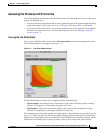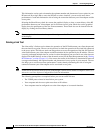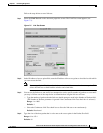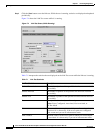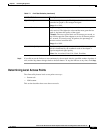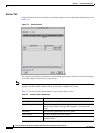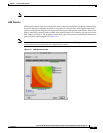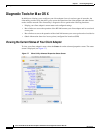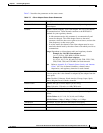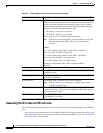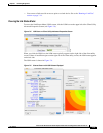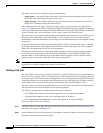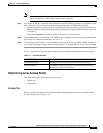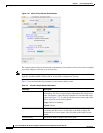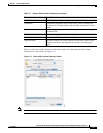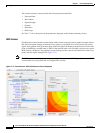
7-11
Cisco Aironet Wireless LAN Client Adapters Installation and Configuration Guide for Mac OS
OL-1377-03
Chapter 7 Performing Diagnostics
Diagnostic Tools for Mac OS X
Table 7-3 describes the parameters on the status screen.
Table 7-3 Client Adapter Status Screen Parameters
Parameter Description
Firmware Version The version of the radio firmware that is currently running on your
client adapter.
Channel Specifies which frequency your client adapter will use as the channel
for communications. These channels conform to the IEEE 802.11
Standard for your regulatory domain.
• In infrastructure mode, this parameter is set automatically and
cannot be changed. The client adapter listens to the entire
spectrum, selects the best access point to associate to, and uses the
same frequency as that access point.
• In ad hoc mode, the channel of the client adapter must be set to
match the channel used by the other clients with which you wish to
communicate.
Range: Dependent on client adapter radio and regulatory domain
Example for 2.4-GHz client adapters:
1 to 11 (2412 to 2462 MHz) in North America
Example for 5-GHz client adapters:
36, 40, 44, 48, 52, 56, 60, and 64 (5180, 5200, 5220, 5240,
5260, 5280, 5300, and 5320 MHz) in North America
Note Refer to Appendix D, “Channels, Power Levels, and Antenna
Gains,” for a list of channel identifiers, channel center
frequencies, and regulatory domains for each channel.
World Mode Domain When world mode is enabled and your client adapter has associated to
an access point, this is the channel set adopted by the adapter from the
access point.
Value: Disabled, Unknown, North America, Europe, Japan, Spain,
France, Belgium, Israel, Canada, Australia
Product Name Identifies the type of client adapter you are using.
Value: 340 series, 350 series, or AIR-CB20 series
MAC Address The MAC address assigned to your client adapter at the factory.
Data Rate The rate at which your client adapter is currently transmitting data
packets.
802.11a Values: 6, 9, 12, 18, 24, 36, 48, and 54 Mbps
802.11b Values: 1 Mbps, 2 Mbps, 5.5 Mbps, or 11 Mbps
Transmitted The number of bytes that were transmitted successfully.
Received The number of bytes that were received successfully.
Receive Errors The total number of that were received with errors.



